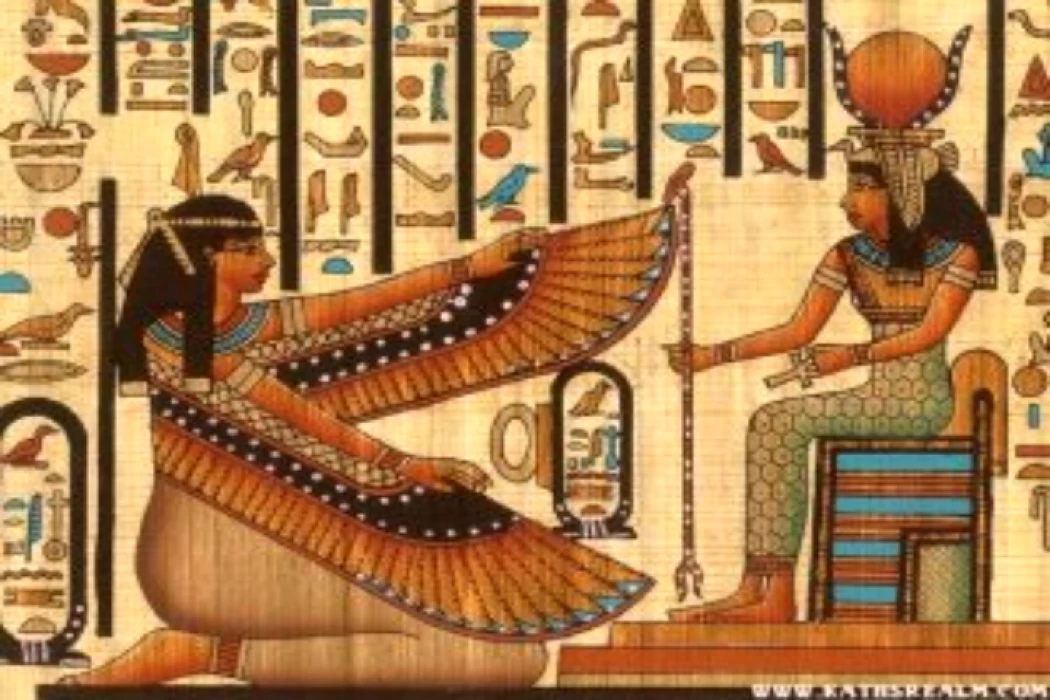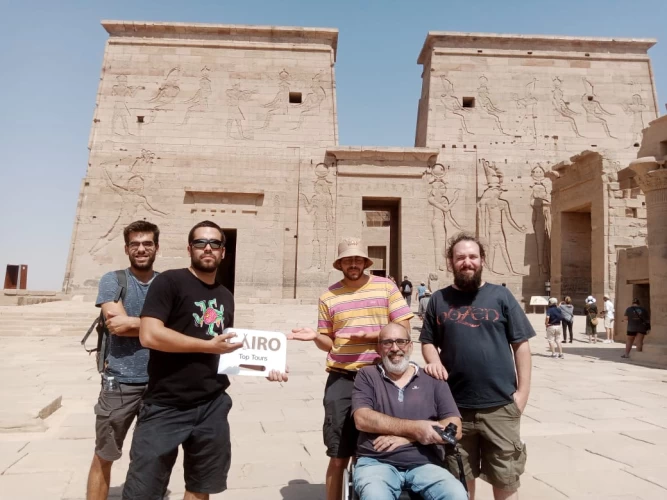
Богиня Нехбет | Египетская богиня
Нехбет часто изображалась распростершей крылья над правителем и держащей в когтях изображение картуша или другие эмблемы. Она представлялась в виде девушки, обычно с головой стервятника, в белой короне, и обычно изображалась сосущей правителя. Центром культа Нехбет был Эль-Каб, однако ее главный эпитет делал ее бессмертной Иераконполиса (или Нехена), традиционного города напротив Эль-Каба, в географическом регионе реки Нил.
Нехбет была покровительницей административного деления, демонстрируя единство "Двух дам" в имени правителя Небти (с ее коллегой Ваджет). Она обычно называлась "Хеджет" (Белая корона) в связи с короной административного деления и часто фигурировала в качестве геральдического устройства, представляющего административное деление. Кроме того, она была защитницей царских детей, а в более поздние периоды - всех маленьких детей и будущих матерей.
Есть доказательства того, что Нехбет уже была стандартной в Египте преддинастического периода, однако она была связана именно с городом Нехеб (ее имя действительно означает "она из Нехеба"). Однако к первому семейному количеству Нехеб и Нехен (культовый центр египетского божества Старшего) объединились, и она или он и Ваджет были объединены, чтобы сделать имя фараона Небти; ее положение как представителя административного деления было абсолютно установленным.
Упоминания в Текстах пирамид (Пятая династия) свидетельствуют о том, что Нехбет считалась бессмертным творцом с эпитетом "Отец отцов, Мать матерей, которая существовала с самого начала и является создателем этого мира". Она изображалась на королевской одежде Немес в виде стервятника или змеи, а на одежде Четвертого народного стервятника - в виде прекрасной королевской супруги.
Откройте для себя больше о богах и богинях древнего Египта через однодневные туры в Луксор, также если вы можете сесть на поезд на пару часов на север, вы также можете охватить его во время однодневных туров в Асуан или даже нашего 2-дневного тура в Луксор из Асуана, есть много однодневных туров в Египет, которые отправляются в Луксор из различных египетских городов, таких как Хургада.
Бронируйте сейчас, чтобы получить незабываемые впечатления от отдыха в Египте и пакетов отдыха в Египте Однодневные туры в Луксор, однодневные туры в Асуан и роскошные туры в Египет, чтобы насладиться сказочными пирамидами Гизы и Сфинксом, экскурсиями в Египетский музей, Долину Царей, коптский и исламский Каир, а также храм Абу-Симбел.
References within the Pyramid Texts (from the Fifth Dynasty) ensure that Nekhbet was thought-about to be a creator immortal with the epithet “Father of Fathers, Mother of Mothers, who has existed from the start, and is Creator of this World”. She was diagrammatical on the king’s Nemes clothing as a vulture or a snake and from the Fourth folk vulture clothing for an excellent royal spouse.
In ancient mythology, Nakhbet is considered a local goddess from the early pre-dynastic era. The goddess was called the patroness of the city of Nakhbet (Kaab), and she later became the patroness of Upper Egypt and was the second patroness of all of ancient Egypt when it was unified. In Egyptian religion, Nakhbet was seen by the people as the protector of all the rulers of Upper Egypt. Like a bird eagle the powerful goddess.
In ancient mythology, Nakhbet is considered a local goddess from the early pre-dynastic era. The goddess was called the patroness of the city of Nakhbet (Kaab), and she later became the patroness of Upper Egypt and was the second patroness of all of ancient Egypt when it was unified. In Egyptian religion, Nakhbet was seen by the people as the protector of all the rulers of Upper Egypt. Like a bird eagle the powerful goddess.
Nekhbet was often pictured as spreading her wings over the ruler while grasping in her claw the cartouch image or different emblems. She appeared as a girl, typically with a vulture’s head, sporting a white crown, and was generally delineated suckling the ruler. the middle of Nekhbet’s cult was El-Kāb, however, her principal epithet created her the immortal of Hierakonpolis (or Nekhen), the traditional city opposite El-Kāb, on the geographical region of the Nile River.
Nekhbet has been depicted since the beginning of the historical era in the form of a female vulture, which is still occasionally seen in Upper Egypt. She is usually depicted in profile or with wings spread in a straight pose, with only the head and feet depicted in profile. She is usually depicted holding the Sn sign in her talons, which signifies eternity or dominance. Nekhbet is identified with the goddess Wadjet, her counterpart in Lower Egypt, and thus Nekhbet is sometimes depicted as her serpent counterpart.
With Wadjet, she embodied one of the five royal titles, Nebty, meaning "the two ladies" or "belonging to the two ladies." Nekhbet also personified the crown of Upper Egypt. In human form, she may sometimes be depicted as a woman wearing a vulture-shaped headdress or crown, or she may wear the White Crown of Upper Egypt.
Nekhbet was the patron of administrative division, showing the unity of the “Two ladies” within the Nebty name of the ruler (with her counterpart Wadjet). She was typically known as “Hedjet” (White Crown) in relevance to the crown of the administrative division and frequently seems as a heraldic device representing the administrative division. She was conjointly a defender of royal kids and, in later periods, of all young kids and expectant mothers.
There is proof that Nekhbet was already standard in Predynastic Egypt however was specifically related to the city of Nekheb (her name truly means “she of Nekheb”). However, by the first family amount, Nekheb and Nekhen (cult center of Egyptian deity the Elder) had incorporated and she or he and Wadjet were combined to make the Nebty name of the pharaoh; her position as a representative of administrative division was absolutely established.
There was a huge cult cabin for Nakhbet at El Kab, although little remains of it. Since at least the Old Kingdom, Nakhbet has been characterized by the white crown of Upper Egypt, and was thus closely associated with the monarchy and the person of the king, so she was mythologically known as the "mother of the king." The pyramid texts depicted her as a mother goddess in the form of a large white cow. The pyramid texts depicted her as a matriarch in the form of a large white cow. In royal birth scenes, such as those found in the funerary temple of King Sahuros at Abu Sir, Nakhbet is represented as a nurturer or protective caretaker of the king.
There is proof that Nekhbet was already standard in Predynastic Egypt however was specifically related to the city of Nekheb (her name truly means “she of Nekheb”). However, by the first family amount, Nekheb and Nekhen (cult center of Egyptian deity the Elder) had incorporated and she or he and Wadjet were combined to make the Nebty name of the pharaoh; her position as a representative of administrative division was absolutely established.
Along with Wadjet, she embodied one of the five royal titles, Nebty, meaning "the two ladies" or "belonging to the two ladies." Nekhbet also personified the crown of Upper Egypt. In human form, she was sometimes depicted as a woman wearing a vulture-shaped headdress or crown, or she might wear the White Crown of Upper Egypt.
















